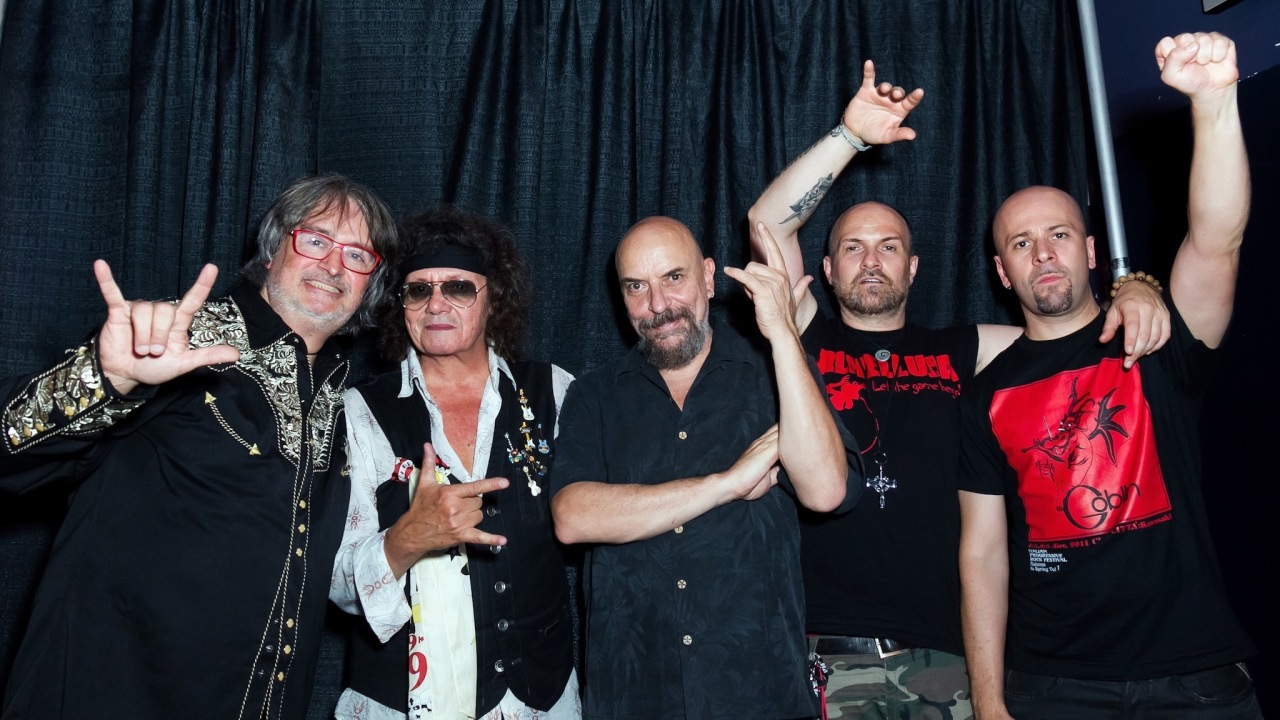Goblin: dawn of the dead good soundtrack
Keyboard player from Italian prog-horror legends Goblin talks about making scary music

Over the next two nights, Italian prog-horror legends Goblin will be performing the soundtracks to George Romero's Dawn Of The Dead and Dario Argento's Suspiria in London. We spoke to keyboard player Maurizio Guarini ahead of the shows.
Maurizio Guarini was a crucial part of Goblin in their heyday, when the Italian band were celebrated for their work on the classic 1976 horror movie Suspiria. The keyboard player originally joined Goblin in 1975, but briefly left just after work on Suspiria was finished, returning in 1978, before quitting again four years later.
Guarini grew up in Rome listening to bands like the Beatles and Rolling Stones, but truly found his niche in the progressive area.
“I loved those bands like Yes and Genesis, who made keyboards so much a part of their sounds. But my favourite band were definitely Gentle Giant. I was really into their sophistication. Then, later on I got hooked on jazz rock, with artists like The Soft Machine and Henry Cow. I found those sort of bands very challenging, and they inspired a lot of my work.”
For Guarani, one of the highlights of his career was getting to work with director Dario Argento on the aforementioned Suspiria.
“That was an amazing time for us all. Dario really believed in Goblin and what we were doing musically. He worked with the band on the music for Profondo Rosso before I joined, so he was already acquainted with what we could do. But on Suspiria he really let us stretch out and try different things.”
What made Suspiria different was that Goblin were brought in to score the film while it was still in production, and that gave them considerably more freedom.
The latest news, features and interviews direct to your inbox, from the global home of alternative music.
“I’m not saying that we actually influenced the way that Dario shot any scenes, but what we were able to do was be a lot more interactive with the movie. When you are composing the music for a film that’s already finished, you are tied to the director’s vision when it’s completed and self-contained. But here, we could create something scene by scene.”
And Goblin collaborated very closely with Argento; in fact, the latter was almost an extra member of the band.
“Most of the time, the director will give you a cut of the movie, let you come up with music and once you’ve finished then he’ll give comments, positive or negative. But Dario was in the studio a lot with us. He was very much part of our creative process. He had comments and criticisms on everything we did, which could be very annoying but also really helpful.
“One thing we noticed early on with Dario was that he loved the music to scare him. If we played a piano piece to accompany a murder scene, then he wanted it to make him jump – he didn’t want a quiet moment or two in there, but it had to be very loud. Otherwise, he wasn’t satisfied at all.”
Argento himself was a huge supporter of Goblin and their contributions to his films.
“I loved these musicians. What they did fitted so well into my movie ideas, They also allowed me to get involved with the music, which was important to me. They created the music, but I had my say as well. For me, their best work was on Suspiria.”
Guarini, who now lives in Toronto, agrees that Goblin reached a peak with this movie.
“I can’t tell you why we were so good on that film, but it all came together so well. I don’t even think it was a smooth creative situation, either. We had plenty of disagreements with Dario over the way the music was going, and there were a lot of changes made to the style which, at the time, disappointed us. But when we saw the final movie, it all sounded brilliant. Scenes we hated when we’d originally scored them just leapt out. And the fact the music still gets a huge response, whenever it’s played live, tells its own story.
“It’s strange that the band are so known for the music to one film, but maybe Goblin were, and are, at their best, when working to images created by someone else. That sort of thing is restrictive, but also gives musicians a lot more freedom than you might expect.
“The movie has dated so well, which means the same is also true of the soundtrack.”
**Goblin are performing at the Union Chapel tonight and tomorrow night. Tickets for Dawn Of The Dead (this evening) are still available. **
Malcolm Dome had an illustrious and celebrated career which stretched back to working for Record Mirror magazine in the late 70s and Metal Fury in the early 80s before joining Kerrang! at its launch in 1981. His first book, Encyclopedia Metallica, published in 1981, may have been the inspiration for the name of a certain band formed that same year. Dome is also credited with inventing the term "thrash metal" while writing about the Anthrax song Metal Thrashing Mad in 1984. With the launch of Classic Rock magazine in 1998 he became involved with that title, sister magazine Metal Hammer, and was a contributor to Prog magazine since its inception in 2009. He died in 2021.

